Tom Hanks praised Eisenhüttenstadt Germany in front of millions of American TV viewers on David Letterman. But why? What once arose from nothing quickly grew into the first real planned city in the GDR. More than 50,000 people lived here until the fall of the Wall. Since then, the city has shrunk considerably. What remains is the largest landmark in Germany. Reason enough to take a look at this open-air museum of GDR history. Let’s go for a walk to the best Eisenhüttenstadt sights!
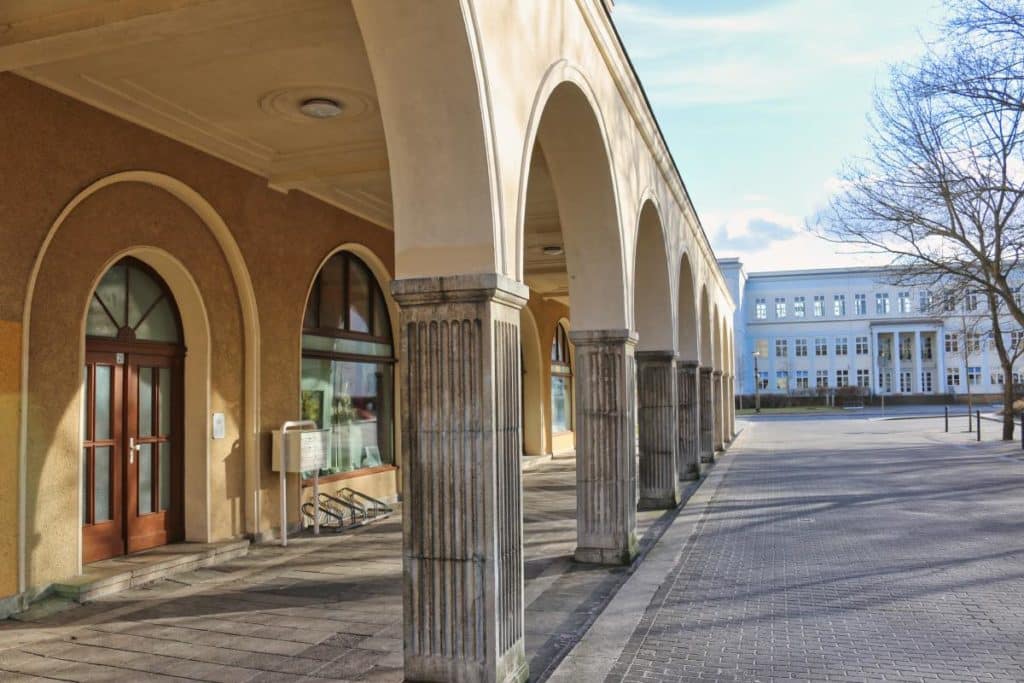
Eisenhüttenstadt Germany as a socialist town
Eisenhüttenstadt was the first real planned city in the GDR. It was built in 1950 in the middle of the sand of the Mark Brandenburg, shortly after a decision at the Third Party Congress of the SED (Socialist Unity Party of Germany). The planners were able to create it completely from scratch according to the guidelines of a socialist city. The flats built here were among the most modern in the GDR and were an important lure to attract citizens to the new planned city. In addition, the supply of goods and services to the population in Eisenhüttenstadt was better than in other areas of the GDR. Everything was organised by the state.
There were to be no private companies here. The people of Eisenhüttenstadt thanked the GDR government. The ironworks was the only large factory in the GDR where there was no strike during the workers’ uprising on 17 June in 1953.
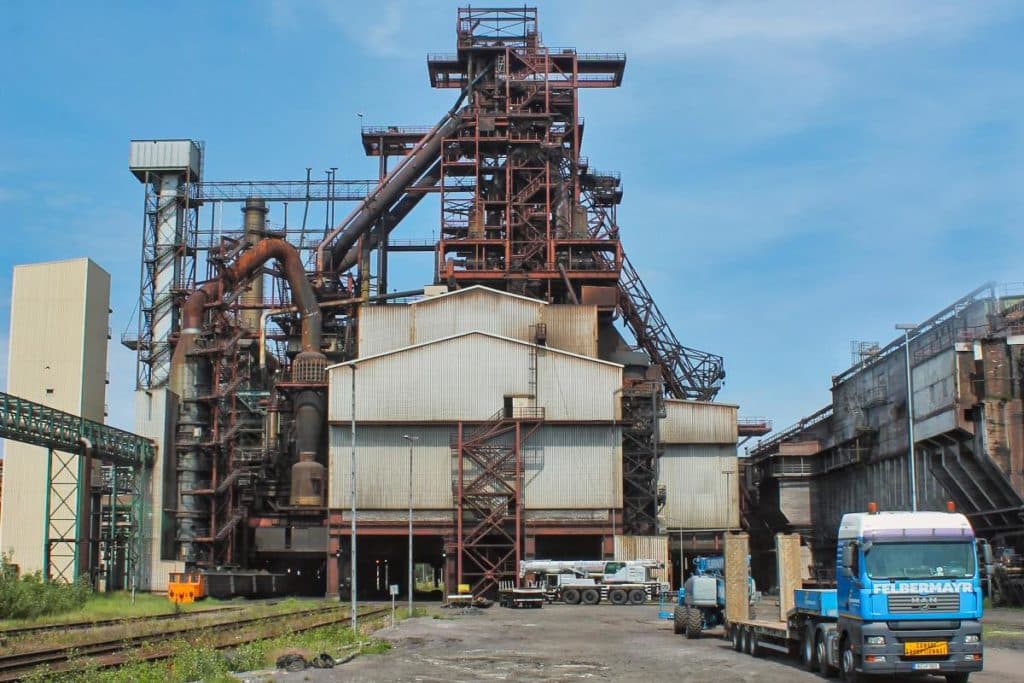
Eisenhüttenkombinat Ost – Steel producer for the whole GDR
The factory was also placed in the middle of the Märkisch desert because the population of the region was suffering from unemployment. In addition, the Eisenhüttenkombinat Ost (Ironworks Combine East, or EKO for short) was to be built near the border with Poland because the raw materials came from the USSR and Poland. A large part was brought to Eisenhüttenstadt by rail from the iron ore mines in the Ukrainian town of Kriwij Rih (Russian: Krivoy Rog).
The coke for it came from Silesia. The GDR needed its own steel production. Before the Second World War, production took place almost exclusively in the Ruhr area. Therefore, the plant was built in no time at all. Only three years after the foundation stone was laid, production began in 1953 and grew rapidly. Around 16,000 people worked at the plant at times.

Stalinstadt – City of Youth
As a city of working people, Eisenhüttenstadt was particularly attractive to young people. Many families with children moved to the planned city. At the beginning of the sixties, one third of the population was of school age. At that time there were already 16 kindergartens and the demand was not even met. There was at least one school in every housing complex, usually even several. Teachers were urgently needed. Some schools even had more than 1,000 pupils. There were playgrounds, sandpits and benches in the large courtyards.

The housing complexes in Eisenhüttenstadt
In accordance with the guidelines for the construction of socialist cities, new housing complexes (in German: Wohnkomplex or WK in short) were built in each case. Housing Complex I was the first block and quite plain. At the height of Stalinism in the GDR in 1952-1953, WK II was built, which is much more pompous and already reflects the idea of palaces for workers. The similarity with the buildings of Stalinallee in Berlin is easily recognisable.
The WK III shows motifs from German fairy tales. Afterwards, however, the housing complexes became much simpler. After de-Stalinisation, Eisenhüttenstadt also opted for more functional architecture in order to be able to build more cheaply and, above all, more quickly. This was intended to alleviate the housing shortage in the GDR. The Eisenhüttenstadt sights are therefore quite different in the individual housing complexes.
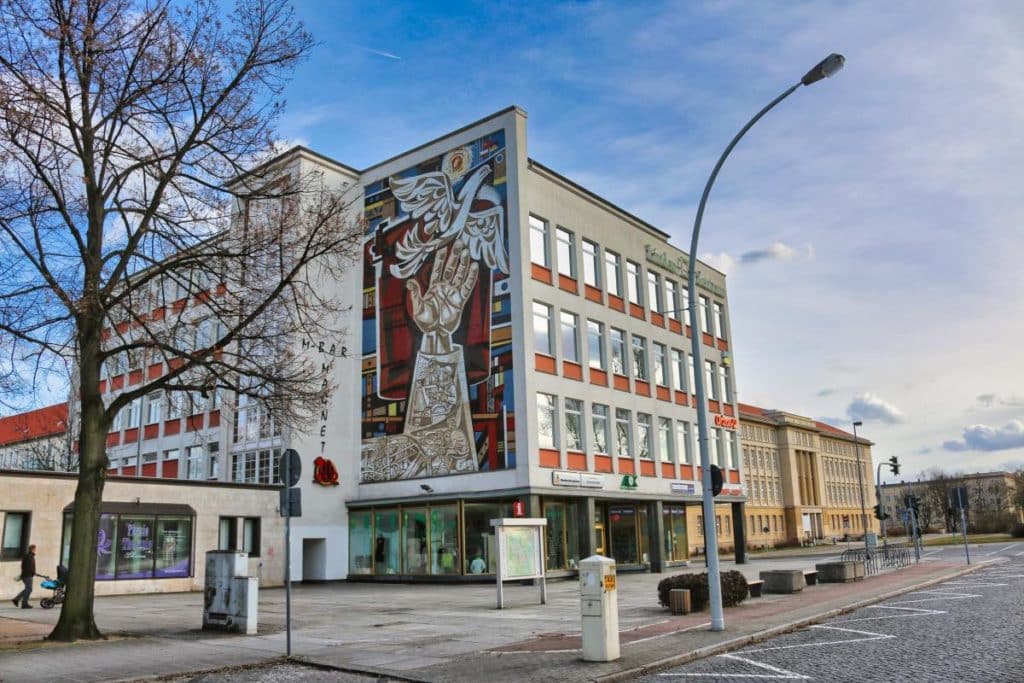
Eisenhüttenstadt sights – the most interesting places in the socialist city
Eisenhüttenstadt has none of the classic sights to offer: There were and are no church steeples in the socialist city. There are hardly any other attractions either. However, the town is a real gold treasure for anyone interested in GDR history and architecture.
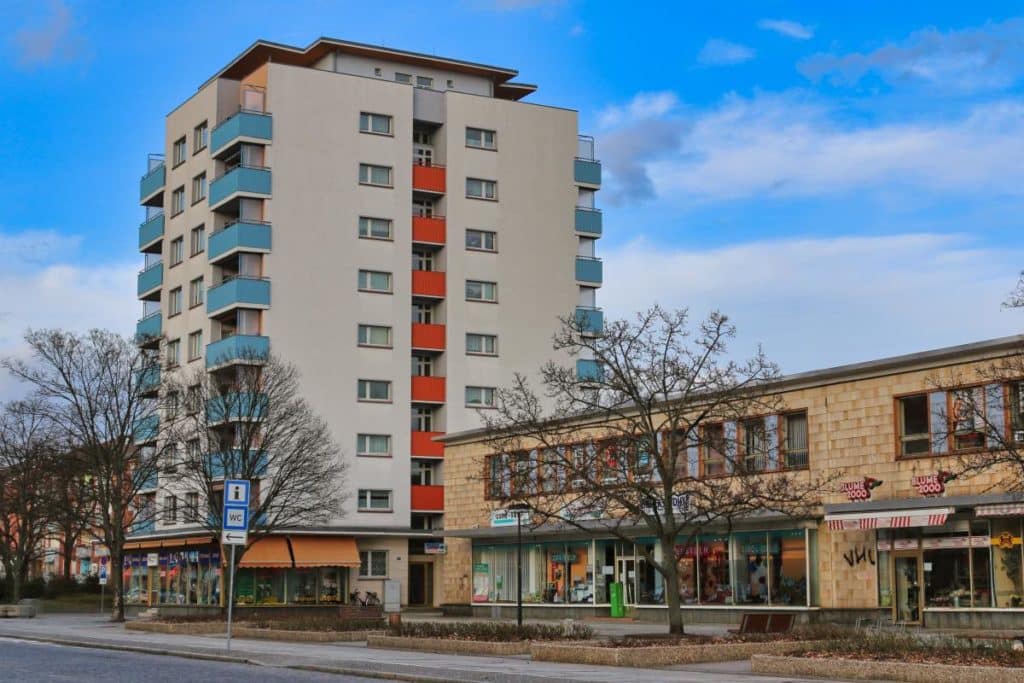
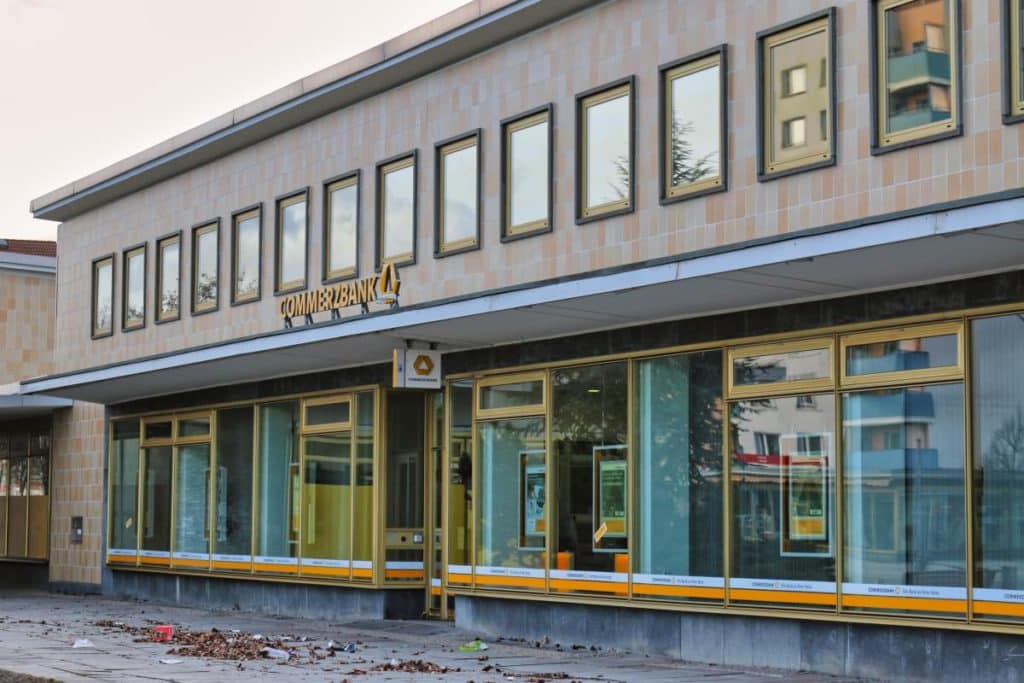


Leninallee (today Lindenallee) – Centre of the steel city
In the baroque era, the great visual axes of the cities led to the castle. In the ideal socialist city, the main street leads to an industrial plant. In Stalinstadt, Leninallee led to the Ironworks Combine East. The steelworks was the largest iron producer in the GDR and is still the city’s defining factory today; after all, Eisenhüttenstadt (“Iron Hut City”) owes its name to it. Some of the names of the streets have changed. Leninallee is now called Lindenallee. But it still forms the centre of the town. This is where the most characteristic buildings are located and there are many architectural and artistic testimonies to the GDR’s past.

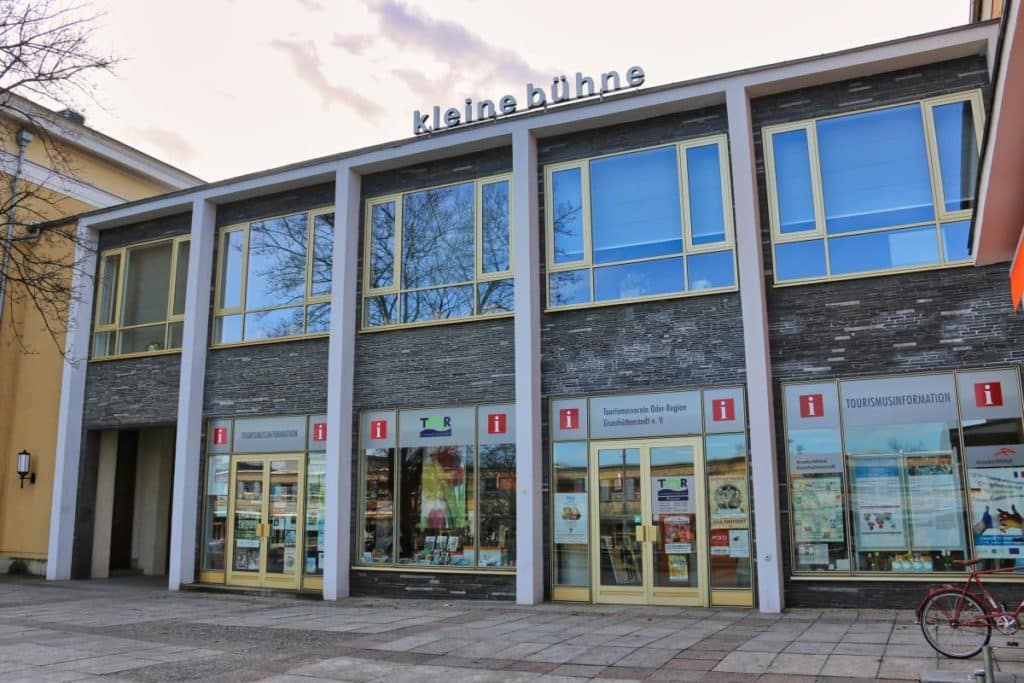
Friedrich-Wolf-Theater
Lindenallee 23
Built in the style of socialist classicism, the theatre is one of the most striking sights and its exterior is a testimony to the Stalin architecture that also existed in the GDR. The theatre, built in 1955, is named after the communist writer Friedrich Wolf, the father of Stasi general Markus Wolf and filmmaker Konrad Wolf. The interior of the theatre still reflects the interior of the 1950s in the GDR – but has of course been refurbished.
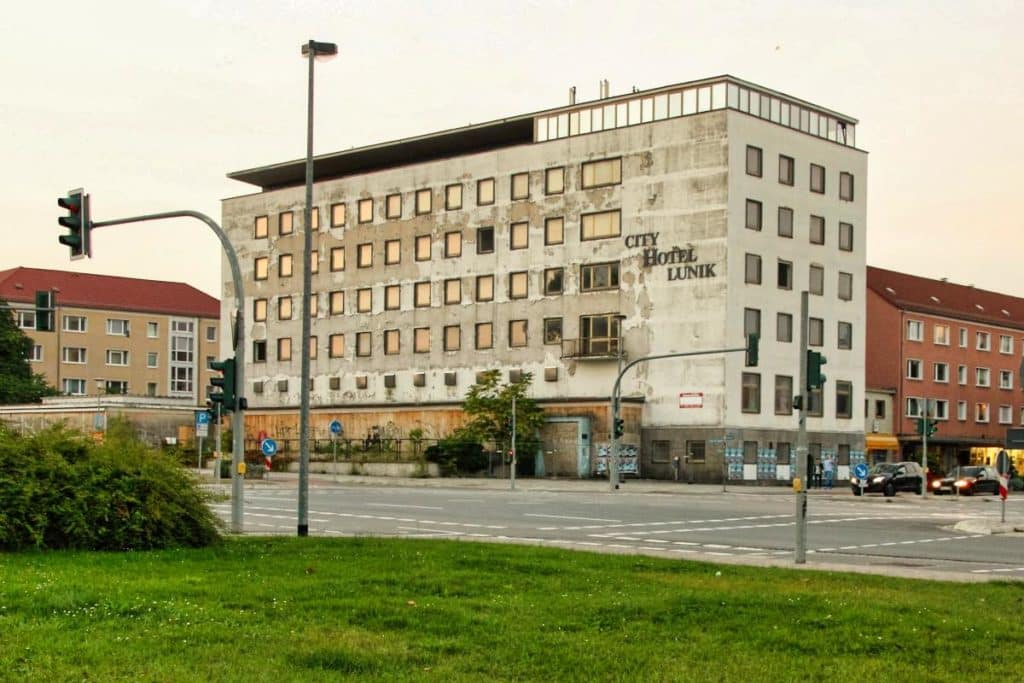
Hotel Lunik
Lindenallee / Straße der Republik
The Lunik was once the best hotel in town, housed a posh restaurant, the local disco and even the local Intershop (a store where you could buy western products in exchange for foreign currencies). The reinforced concrete skeleton construction was built in 1963 and is much plainer than other buildings in Stalinstadt. Today, however, the hotel on Central Square is in complete disrepair. This, however, even inspired the 2007 film Lunik with Anna-Maria Mühe, in which the hotel serves as a base for a group of anarchist robbers.
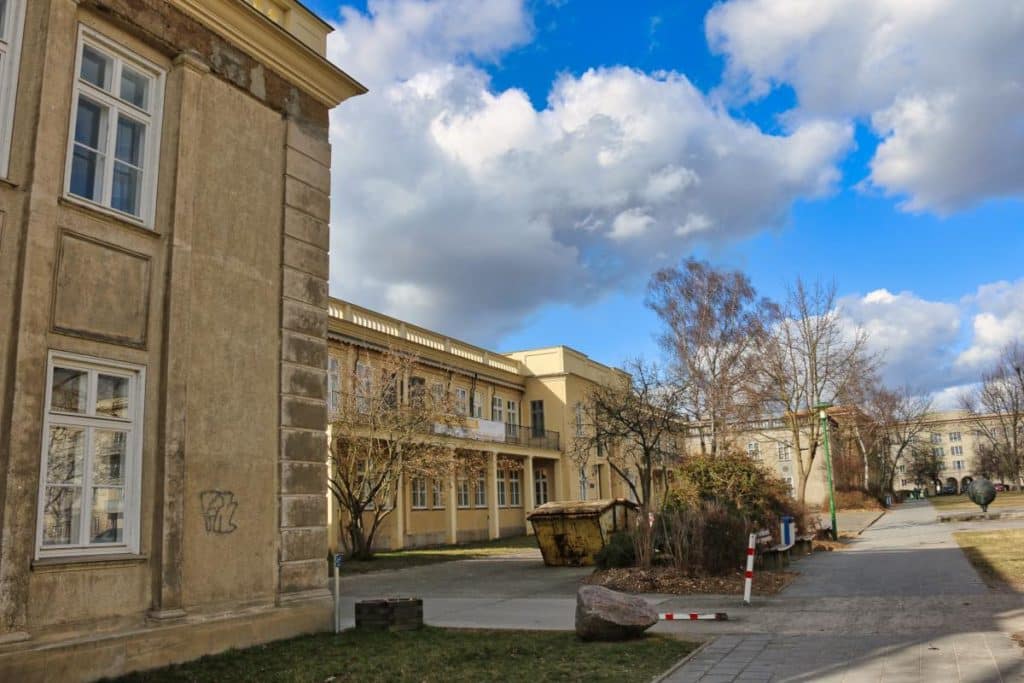
Documentation Centre for the Everyday Culture of the GDR
Erich-Weinert-Allee 3
The Documentation Centre for Everyday Culture of the GDR is a very good museum and housed in an authentic environment. The museum displays 100,000 objects. A former crèche was converted for the show. Here you can see consumer goods such as the dishwashing detergent Fit or even some of the much sought-after television sets. There are also changing exhibitions on various topics.
Eisenhüttenkombinat Ost (today ArcelorMittal Eisenhüttenstadt)
Werkstraße 1
The largest metallurgical facility in the GDR was a city within a city. The first blast furnace had already been built in 1950. The plant attracted thousands of workers and their families and made Eisenhüttenstadt grow quickly. The GDR invested vast sums to be more independent in steel production. In the meantime, the plant has been privatised and belongs to the steel company ArcelorMittal. If you would like to see some boiling steel, guided tours are possible. Contact the Eisenhüttenstadt Germany tourist information office.

Square of German-Soviet Friendship (today Square of Remembrance)
Stalinstadt was also considered a city of German-Soviet friendship because of its connections to the Soviet Union. Stalinstadt was renamed Eisenhüttenstadt after the beginning of the Khrushchev Thaw and in the course of de-Stalinisation in the GDR. But the connection to the Soviet Union remained for a long time. The Square of Remembrance (Platz der Erinnerung) is still a reminder of this today. The obelisk was erected to commemorate the Red Army soldiers and Soviet prisoners of war who died fighting Nazi Germany. As a war memorial, it is still preserved in its original state today, even though the square around it now bears a less ideological name.
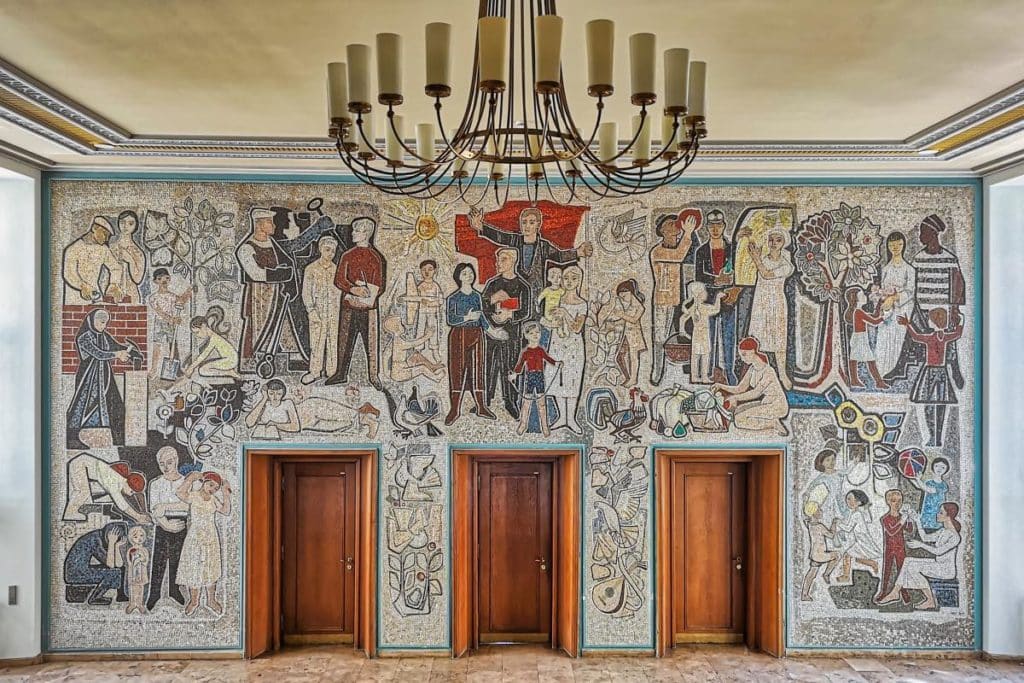
House of Parties and Mass Organisations (today City Hall)
Zentraler Platz 1
It could stand as a town hall or district administration in many cities of the former Eastern Bloc: the Eisenhüttenstadt town hall. Built as the House of Parties and Mass Organisation (see cover picture), it was to be one of the two dominant buildings on Central Square. The other was to be the town hall. But the town hall was never built and so the city administration moved into this building. There is some building-related art inside the building. The staircase is decorated with the mosaic “Our New Life” (“Unser neues Leben”) by Walter Womacka. A model of Eisenhüttenstadt also illustrates how the planning for Stalinstadt was once conceived.
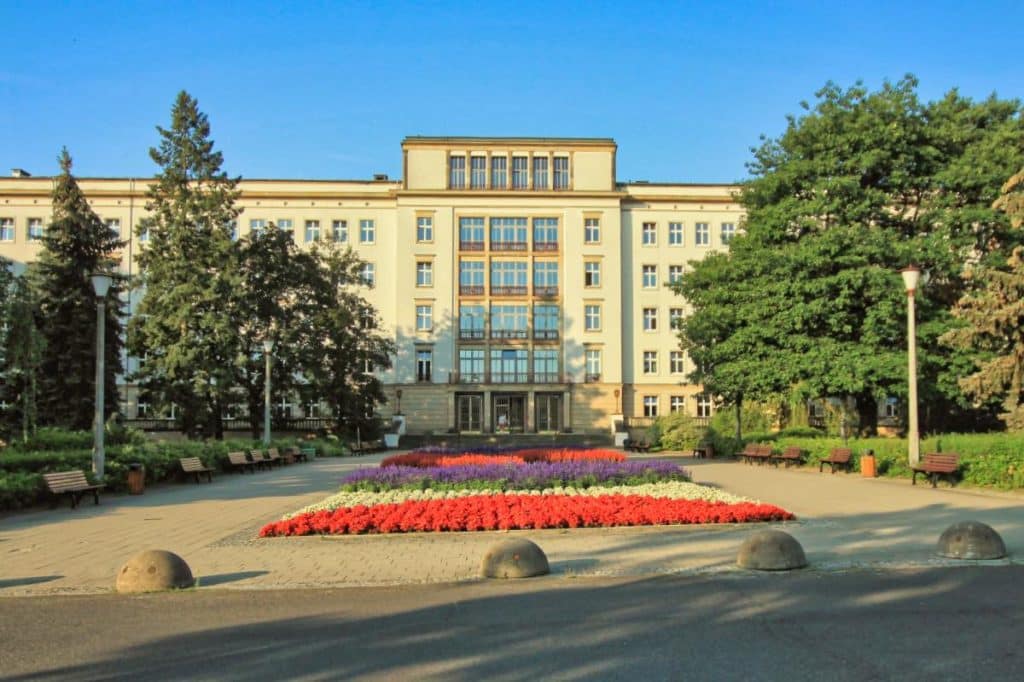
Hospital
Friedrich-Engels-Straße 39
The hospital, which is also responsible for the surrounding area of Eisenhüttenstadt, seems almost oversized. However, you should keep in mind that Eisenhüttenstadt once had many more inhabitants than it does today. In the past, a red star was emblazoned on the central gable of the building.
Self-service shopping hall
Saarlouiser Straße / Heinrich-Heine-Allee
Eisenhüttenstadt’s self-service shopping mall was a novelty. The concept of a supermarket was previously unknown to the citizens of the GDR. But the self-service department store was becoming more and more popular in the East as well. The department store on Saarlouiser Straße looks very modern for its surroundings and is also one of Eisenhüttenstadt’s most beautiful sights for this reason.
Schools and kindergartens
Because Eisenhüttenstadt was so young, there were accordingly many care facilities such as nurseries, kindergartens and schools. Since then, the city’s population has aged and the need for these facilities has decreased. The Documentation Centre is housed in a former crèche. Nevertheless, there are still many children’s facilities in Eisenhüttenstadt today. Particularly interesting: from the balcony of today’s Astrid Lindgren School (Platz des Gedenkens 1), Walter Ulbricht gave the new town the name Stalinstadt.
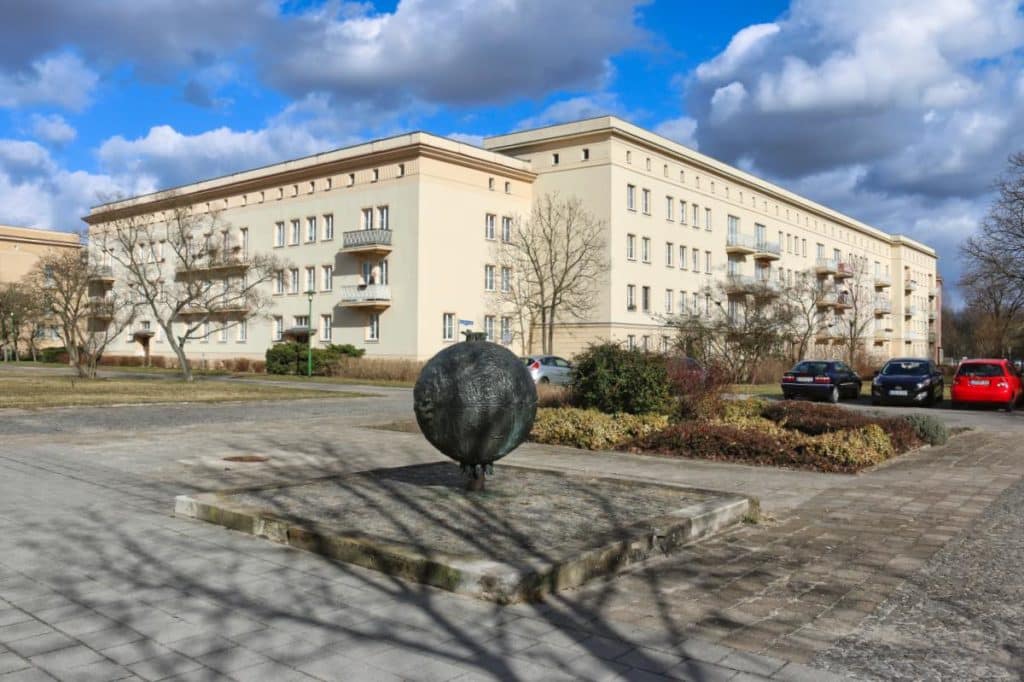
Art on buildings and in public spaces
Sculptures and mosaics are everywhere in the city. It was a rule in the GDR that 2% of the expenditure on building projects had to be spent on art on buildings or in public spaces. That is why many works of art can still be found in Eisenhüttenstadt Germany today. The many facades in WK I-III were also very artistically designed. So it’s worth keeping your eyes open.
Eisenhüttenstadt today
With the privatisation and downsizing of the ironworks combine, many jobs in the city fell away. Many residents looked for new prospects elsewhere and moved away. Today Eisenhüttenstadt, which had a population of around 53,000 before reunification, has only about 32,000 inhabitants. Occasionally this number swells, as there is a large initial reception centre for refugees in the city. The refugees living here are accordingly registered in the town. Many of the former kindergartens have been converted. And yet there are also glimmers of hope for the city.
With the Museum of GDR Everyday Culture, there is a fascinating museum on the subject in an authentic setting. And we’re not the only ones who think Eisenhüttenstadt is an interesting town, at least from a historical point of view. After all, Tom Hanks also liked “Iron Hut City”.
Eisenhüttenstadt travel tips
Getting to Eisenhüttenstadt
By car: It is about 110 kilometres from Berlin to Eisenhüttenstadt. The journey takes just over 2 hours. It is also easy to travel from Dresden or Cottbus. By train: From Berlin, you have a connection with the RE1 train without changing trains. It runs through to Cottbus or Eisenhüttenstadt. Sometimes it ends in Frankfurt (Oder), in which case you have to take the RB11. However, you can change trains without any problems. You can get to Lindenallee from the station on foot in about 25 minutes or take bus line 454. The buses leave shortly after the trains arrive, so hurry.
Accommodation in Eisenhüttenstadt
Unfortunately, there are only a few places to stay in Eisenhüttenstadt. In particular, there is a lack of a hotels that would be housed in the one of the Stalin buildings. And the former Hotel Lunik is now in ruins. However, you can stay overnight in Eisenhüttenstadt in the following places.
LAT Hotel & Apartment House Berlin Eisenhüttenstadt
Why the house is named after Berlin, we don’t know. However, it is a bit confusing. However, the LAT Hotel & Apartmenthaus Berlin Eisenhüttenstadt* is the only real hotel that exists in Eisenhüttenstadt. The hotel offers everything you need for an overnight stay. Single room: from 59 euros, double room: from 65 euros
Pension Balkan
In addition to their restaurant, the owners also run the Pension Balkan, which is also located directly in the Neustadt district. Here you can find cosy and inexpensive rooms with private bathrooms. Single room: from 35 euros, double room: from 49 euros
Hotel Fürstenberg
As the name suggests, the Hotel Fürstenberg* is not located in the Neustadt district, but in the Fürstenberg district, which forms the old town of Eisenhüttenstadt. The hotel is cosy, has nice rooms and offers the best rooms in town. But it is not in the new town. But Fürstenberg is only about 20 minutes’ walk from Lindenallee in Eisenhüttenstadt.
Rooms or flats in Eisenhüttenstadt
In and around Eisenhüttenstadt there are some nice holiday flats listed on Airbnb. Take a look at what’s on offer. If you like something, book a holiday home on Airbnb.

Eating in Eisenhüttenstadt
Gaststätte Aktivist
Karl-Marx-Straße 45
You can still eat at an authentic place in Eisenhüttenstadt today. The Aktivist restaurant still bears the old name. This is where the families of the steelworkers used to sit together and dine. Today there is still a restaurant here, which also bears the old name. However, the majority of the building has now been taken over by the local housing cooperative as its central administration building.
Restaurant Rose
Saarlouiser Straße 41–43
The Rose Restaurant is also located in one of the houses of the area monument. It offers home-style German cuisine such as schnitzel and fried potatoes. What more could you want?
Restaurant Balkangrill
Rosa-Luxemburg-Str. 21
The Balkans restaurant offers something different. In addition to local German dishes, delicious Balkan food is also served here. So if you want to try some real Balkan cuisine, this is the place to be.
No products found.
No products found.
No products found.

